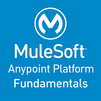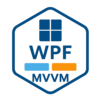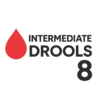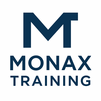
Mainframe Development Training offers comprehensive knowledge of IBM Mainframe environments, focusing on COBOL, JCL, CICS, DB2, and VSAM. Learners gain expertise in developing high-performance applications, managing batch and online processing, and ensuring data integrity in enterprise systems. The program also covers modern practices like Mainframe DevOps, API integration, and cloud connectivity. Ideal for developers, system programmers, and IT professionals looking to advance their Mainframe development skills.
Mainframe Development Training Interview Questions Answers - For Intermediate
1. What is a Partitioned Dataset (PDS) in Mainframe?
A Partitioned Dataset (PDS) is a dataset structure that contains multiple members, each acting like a separate file. It is commonly used to store programs, JCL, and copybooks. PDS simplifies organization, versioning, and access to related files under one dataset name.
2. What is the difference between PS and PDS datasets?
PS (Physical Sequential) datasets store records sequentially, ideal for data files processed in order. PDS (Partitioned Dataset) stores multiple members within a single dataset, each independently accessible, making it suitable for storing libraries of JCL, source code, and utility programs.
3. What is the use of IDCAMS utility?
IDCAMS (Integrated Data Set Control Access Method Services) is a utility used to manage VSAM datasets. It performs operations like defining, deleting, printing, and reproing (copying) datasets. It is widely used for batch management of VSAM files and catalog entries.
4. What is REPRO command in IDCAMS?
REPRO is an IDCAMS command used to copy records from one dataset to another. It is commonly used for data migration, backup, and restoring datasets between VSAM and sequential datasets or between two VSAM datasets.
5. What is an Abend, and how do you handle it?
An Abend (Abnormal End) is an unexpected termination of a program or job. It typically results from errors like data mismatches, invalid operations, or resource constraints. Tools like Abend-AID or system logs (SYSLOG, JESMSGLG) are used to analyze the error and identify the root cause.
6. What is the purpose of the RETURN-CODE in JCL?
The RETURN-CODE is a system-generated code that indicates the success or failure of a program or job step. It is used for conditional job control, allowing subsequent steps to be skipped or executed based on the completion status of prior steps.
7. What is a Catalog in Mainframe systems?
A Catalog is a system-managed index that stores metadata about datasets, including their location on disk volumes. Cataloging allows datasets to be referenced by name without specifying physical storage details, improving dataset management and portability.
8. What is DFHCOMMAREA in CICS?
DFHCOMMAREA (Common Area) is a data structure used to pass data between different programs or transactions within a CICS region. It allows state to be maintained across CICS tasks and is essential for building multi-screen, interactive applications.
9. What is a deadlock in Mainframe systems?
A deadlock occurs when two or more processes hold resources while waiting for each other to release additional resources, resulting in a circular wait and system hang. Techniques such as timeout thresholds and resource ordering are used to prevent or resolve deadlocks.
10. What is ENQ and DEQ in Mainframe?
ENQ (Enqueue) and DEQ (Dequeue) are system services used to control access to shared resources. ENQ locks a resource, preventing other tasks from modifying it simultaneously, while DEQ releases the lock. This mechanism ensures data integrity in concurrent environments.
11. What is an Alternate Index (AIX) in VSAM?
An Alternate Index (AIX) allows additional access paths to a KSDS or ESDS file. It provides secondary keys that enable faster or alternative search criteria. This is useful when applications need to retrieve records based on multiple keys.
12. What is the difference between SYSPRINT and SYSOUT?
SYSPRINT refers to the DD name used to capture informational or diagnostic output, usually from utility programs. SYSOUT refers to the output class used for print or spool output of a job. Both are used to monitor and debug job execution.
13. What is the role of DFHEIBLK in CICS?
DFHEIBLK is the Execute Interface Block used internally by CICS to manage control information about the current task. It contains details like the terminal ID, transaction ID, and error conditions, enabling the program to interact with the CICS environment.
14. How do you optimize a COBOL program for performance?
Optimization involves using efficient algorithms, minimizing I/O operations, leveraging indexed file access, tuning SQL queries (if DB2 is involved), reducing unnecessary computations, and properly managing memory. It also includes using compiler optimization options and analyzing performance using monitoring tools.
15. What is the significance of Region parameter in JCL?
The REGION parameter in JCL specifies the amount of virtual storage allocated to a job or job step. It helps control resource usage and prevents memory over-allocation. Proper tuning of REGION ensures efficient system performance and avoids abends due to storage shortage.
Mainframe Development Training Interview Questions Answers - For Advanced
1. What is Parallel Sysplex in IBM Mainframes, and how does it ensure scalability and availability?
Parallel Sysplex is IBM’s clustering technology for Mainframes, allowing multiple z/OS systems to share data and coordinate workloads while appearing as a single system to users. It employs Coupling Facilities (CFs) to manage shared resources, lock structures, and cache data, enabling seamless workload balancing, high availability, and near-continuous operation. This architecture allows systems to be added or removed dynamically, ensuring horizontal scalability. In case of system failure, other members of the Sysplex take over, providing fault tolerance and disaster recovery capabilities critical for financial and healthcare industries.
2. How does CICS handle multi-threading and task control?
CICS achieves multi-threading through its Task Control Program (TCP), where each transaction runs as a separate task, independently scheduled and managed. CICS employs quasi-reentrancy, meaning that application programs must save their context between calls, allowing CICS to suspend and resume tasks efficiently. The Dispatcher prioritizes tasks using task classes and priorities. This architecture allows thousands of transactions to be processed concurrently, with CICS managing synchronization, deadlock prevention, and efficient CPU utilization across multiple TCBs (Task Control Blocks).
3. What are the differences between IMS DB/DC and DB2/CICS architecture?
IMS DB/DC is an integrated hierarchical database (IMS DB) and transaction manager (IMS DC), optimized for high-speed, low-latency batch and online transaction processing. DB2/CICS is a relational database and OLTP combination, providing flexible schema design, SQL-based querying, and integration with modern enterprise systems. While IMS DB is ideal for applications with fixed, predictable data structures and performance requirements, DB2/CICS offers more flexibility, portability, and integration with modern data analytics and reporting tools. Both coexist in many enterprises, chosen based on workload characteristics.
4. How do you design a high-performance CICS program interacting with DB2?
High-performance CICS-DB2 programs follow several design best practices: using proper commit frequency to balance transaction integrity and locking; leveraging optimistic locking and row-level locking to reduce contention; designing efficient SQL with indexed access paths; minimizing data movement by using host variables effectively; and avoiding excessive context switching. Application design should also use minimal calls per transaction and leverage CICS’ connection pooling (Threadsafe programs with OPEN API architecture) for DB2 access. Regular monitoring using OMEGAMON or CICS/DB2 Transaction Analyzer identifies tuning opportunities.
5. How do you perform Mainframe capacity planning and workload management?
Capacity planning involves analyzing system usage trends (CPU, DASD, memory, I/O) using SMF (System Management Facility) data and RMF (Resource Measurement Facility) reports. Workload Manager (WLM) is configured to prioritize workloads based on business importance, managing CPU allocation, dispatch priorities, and response time goals. Predictive modeling tools (IBM zAware, IBM Z Performance and Capacity Analytics) help forecast future demand. Capacity upgrades (adding zIIPs, zAAPs, or general processors) and LPAR tuning ensure sustained performance as business needs grow.
6. What is dynamic transaction routing in CICS and why is it important in a Sysplex?
Dynamic Transaction Routing (DTR) allows a CICS region to route transactions to other regions within a Sysplex, balancing workloads and improving scalability. It decouples the terminal or API endpoint from the application logic, allowing routing decisions based on transaction class, system availability, or resource usage. DTR supports workload balancing across regions without user intervention, which is crucial in highly available architectures like Parallel Sysplex, where service continuity must be maintained even if some CICS regions are taken down for maintenance.
7. What is the difference between SQLCA and SQLCODE in a COBOL-DB2 program?
SQLCA (SQL Communication Area) is a data structure that provides detailed information about the outcome of an SQL operation in a COBOL-DB2 program. It contains fields such as SQLCODE, SQLSTATE, error messages, and warning flags. SQLCODE is a specific field within SQLCA that returns the numeric result of an SQL statement: 0 indicates success, positive codes indicate warnings, and negative codes indicate errors. While SQLCODE gives a quick result, SQLCA offers deeper insight for diagnostics and error handling.
8. How do you implement advanced error handling in CICS programs?
Advanced error handling in CICS involves using EXEC CICS HANDLE CONDITION, RESP, RESP2, and HANDLE ABEND to manage expected and unexpected errors. Programs implement centralized error handling modules that log context, transaction details, and environment data (from EIB and COMMAREA). For DB2-related errors, SQLCODE/SQLSTATE checks are used. Transaction dumps (using CEDF or CICS Auxiliary Trace) and Abend-AID integration assist with post-mortem analysis. Exception patterns are logged to security or audit systems for regulatory compliance.
9. What is a Coupling Facility (CF) structure, and how is it used in Mainframe environments?
A Coupling Facility (CF) is a specialized hardware and software component in Parallel Sysplex that provides high-speed, shared memory structures (e.g., lock structures, cache structures, list structures). CFs enable data sharing among z/OS systems with low latency and high throughput. They are critical in environments such as DB2 Data Sharing, CICS Dynamic Transaction Routing, and VSAM RLS (Record Level Sharing). CF structures ensure global data consistency, fast lock resolution, and support for high-availability applications by eliminating single points of failure.
10. What is VSAM Record Level Sharing (RLS), and how does it differ from non-RLS access?
VSAM RLS allows concurrent read/write access to VSAM datasets across multiple systems in a Sysplex while maintaining data integrity. It uses CF structures to manage locks and buffer coherency. Non-RLS access locks the entire dataset or key range, limiting concurrency and increasing the risk of deadlocks. RLS enables applications like CICS and batch jobs to share datasets with fine-grained control, providing better scalability and enabling 24/7 processing for online applications.
11. How do you tune buffer pools for DB2 performance optimization?
Tuning buffer pools involves adjusting size (VPSEQT, VPSIZE) to minimize physical I/O and maximize data caching. The goal is to keep frequently accessed pages in memory. Separate buffer pools are used for different data types (index vs. data pages) or for high-transaction vs. batch workloads. Page steal algorithms and prefetch settings (sequential or list prefetch) are optimized based on access patterns. Buffer pool hit ratios and wait times are continuously monitored with DB2 accounting and statistics reports to guide tuning adjustments.
12. How does Mainframe handle cross-platform interoperability in modern hybrid architectures?
Modern Mainframes support interoperability via APIs (REST/JSON using z/OS Connect EE), MQ (IBM MQ for asynchronous messaging), and data replication (CDC tools like Infosphere). Web services can expose legacy business logic as callable microservices. z/OSMF REST APIs allow programmatic interaction with z/OS components. Cross-platform integration is further enhanced with OpenShift/zCX containers and Java/J2EE running on z/OS Liberty. Enterprises adopt these patterns to create hybrid cloud and digital platforms without needing to rewrite critical Mainframe applications.
13. What is the role of SMF (System Management Facility) in Mainframe performance management?
SMF is a system-wide facility that collects performance and usage data across all z/OS components: CPU utilization, memory, DASD, network traffic, transaction volumes, I/O rates, and more. It records data in SMF records (e.g., SMF 30 for job accounting, SMF 70 for CPU). SMF feeds data to performance tools (RMF, OMEGAMON, BMC MainView) and capacity planning models. Regular analysis of SMF helps identify resource bottlenecks, tune workloads, project capacity needs, and ensure compliance with SLAs.
14. What is the significance of LE (Language Environment) in COBOL applications on z/OS?
LE (Language Environment) provides a standardized runtime for programs written in COBOL, PL/I, C, and other languages on z/OS. It offers services like memory management, condition handling, date/time functions, and common I/O services. LE enables consistent behavior across programs, facilitates mixed-language integration, and simplifies debugging. For COBOL developers, using LE runtime options (like HEAP, STACK, RPTSTG, TERMTHDACT) allows precise control over application behavior, helping manage storage usage and program recovery.
15. How do you migrate legacy Mainframe applications to modern DevOps pipelines?
Migration to modern DevOps pipelines starts by moving source control from legacy tools (Endevor, Panvalet) to Git-based SCM. Automated builds are set up using Jenkins or GitLab CI with DBB (Dependency Based Build). Automated testing frameworks (ZUnit, Hiperstation) are integrated for continuous testing. Code quality tools like SonarQube analyze COBOL and JCL. Deployment automation is implemented with UrbanCode Deploy or Ansible. Additionally, REST APIs and z/OS Connect EE enable integration with cloud-native services, allowing hybrid Mainframe + Cloud delivery models. The process is iterative, ensuring gradual modernization without risking mission-critical systems.
Course Schedule
| Dec, 2025 | Weekdays | Mon-Fri | Enquire Now |
| Weekend | Sat-Sun | Enquire Now | |
| Jan, 2026 | Weekdays | Mon-Fri | Enquire Now |
| Weekend | Sat-Sun | Enquire Now |
Related Courses
Related Articles
- Configuring Microsoft Dynamics 365 Commerce: Best Practices and Key Concepts
- Navigating Your Career with SailPoint Certification Training
- Mastering Process Control with Emerson DeltaV DCS
- How SAP Logistics Execution (LE) Enhances Transportation & Warehouse Management
- The Role of an AVEVA E3D Admin: Responsibilities and Skills Required
Related Interview
- Google Data Engineer - Professional Training Interview Questions Answers
- Distributed Control Systems ( DCS ) Interview Questions Answers
- Process Engineering - Interview Question Answers
- Workday Adaptive Planning Training Interview Questions Answers
- Dayforce Online Training Interview Questions Answers
Related FAQ's
- Instructor-led Live Online Interactive Training
- Project Based Customized Learning
- Fast Track Training Program
- Self-paced learning
- In one-on-one training, you have the flexibility to choose the days, timings, and duration according to your preferences.
- We create a personalized training calendar based on your chosen schedule.
- Complete Live Online Interactive Training of the Course
- After Training Recorded Videos
- Session-wise Learning Material and notes for lifetime
- Practical & Assignments exercises
- Global Course Completion Certificate
- 24x7 after Training Support













 Join our Live Instructor-Led online classes delivered by industry experts
Join our Live Instructor-Led online classes delivered by industry experts